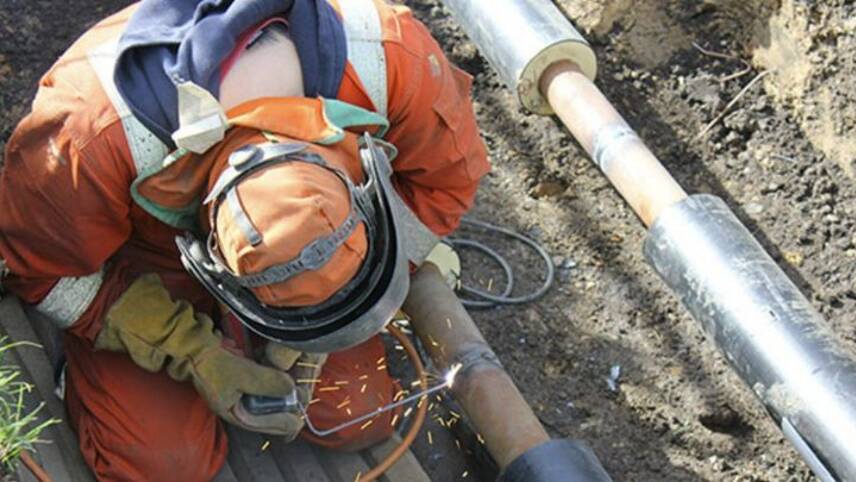Register for free and continue reading
Join our growing army of changemakers and get unlimited access to our premium content

Image: Vital Energi
Councillors met to discuss proposals for extending the Leeds PIPEs network on 9 February and ultimately approved the plans. The network already serves almost 2,000 homes, commercial buildings and public buildings across the city region with heat recovered from Veolia’s local recycling and energy recovery facility, generated during the incineration of non-recyclable waste.
The plans approved by the Council concern five new extensions to the network, totalling 2.5km. Vital Energy, which is co-constructing the network with the Council, stated in the plans that the extension could connect buildings to 11,600MWh of heat each year, up from the 13,900MWh provided during 2021.
In approving the plans, Councillors pointed to the Council’s 2030 net-zero target and the need to safeguard residents from the energy price crisis. To this former point, the network is estimated to have mitigated 2,0000 tonnes of CO2e in 2021. It is forecast to mitigate 11,000 tonnes of CO2e annually once fully built out. To the latter, Vital Energi touts a 10-25% reduction in fuel bills for those connected to the network, as compared to using individual gas boilers.
Leeds City Council’s executive member for infrastructure and climate, Cllr Helen Hayden, said: “As the wholesale price of gas rises and as more and more building managers and developers seek to reduce their carbon footprint, our district heating offer has become even more competitive.”
Wholesale gas prices in the UK are currently around four times as high as they were this time last year, largely due to discrepancies in international supply and demand.
With this in mind, Leeds Councillors did agree on a 35p per week increase in the standing charge for those connected to PIPES. Also agreed was a 4.9% increase in charges for those connected to other local district heating schemes.
PIPES’ first phase was supported by £4m of funding from the West Yorkshire Combined Authority and Leeds City Region Enterprise Partnership (LEP) through the Leeds City Region Growth Deal. The EU also provided £5.8m of funding.
The second phase was jointly funded through the Leeds City Region Growth Deal, the European Investment Bank (EIB) and the UK Government’s Heat Network Investment Project (HNIP).
A total of £320m has been committed to HNIP by Westminster. Last month, a £19.1m investment round was confirmed to support the installation of five heat networks – two in Bristol and one each in Liverpool, London and Worthing.
According to the Climate Change Committee (CCC), heat networks currently provide just 2% of the UK’s heat demand. In a net-zero UK in 2050, this proportion will need to be around 20%.
Heat pump conundrum
In related news, trade association the Energy and Utilities Alliance (EUA) has this week published an analysis concluding that, when the new higher price cap is implemented in April, homes using heat pumps will still be paying more for bills than those with gas boilers.
By the EUA’s calculations, the annual cost of heating the average UK home with a heat pump will increase from £939 to £1,251. The cost jump will be steeper for those with gas boilers, from £584 to £984.
The most energy-efficient homes, the study emphasises, will see a smaller increase in cost regardless of whether they use gas or electric heating.
Carbon Brief’s deputy editor and policy editor Simon Evans has refuted the analysis, arguing that the EUA is “assuming the worst-case scenario” regarding the efficiency of heat pumps and the “best-case scenario” for gas boilers.
Sarah George


Need more of these kinds of systems across the country. The benefits of scale apply to the efficiency of the system compared to individual boilers. Basically the bigger the source of "heat" the more efficient the entire system. The drawback is the need to highly insulate the pipes and of course installing all that pipework. However that compares to ripping out existing copper pipes and steel radiators in homes just because the heat pump won’t work with them.
Towns & cities, like London, could tap the massive store of heat energy that normally flows silently through their middle. The Thames carries megajoules of heat through London every hour that a series district water source heat pumps could harness to heat thousands of buildings quietly, cleanly and efficiently.
The EUA is more a lobby group rather than Trade Association. It’s management team are from gas boiler manufacturers and British Gas i.e. vested interests. It does not represent Energy and Utilities across the board but only those promoting gas. Please call out this in your reporting.